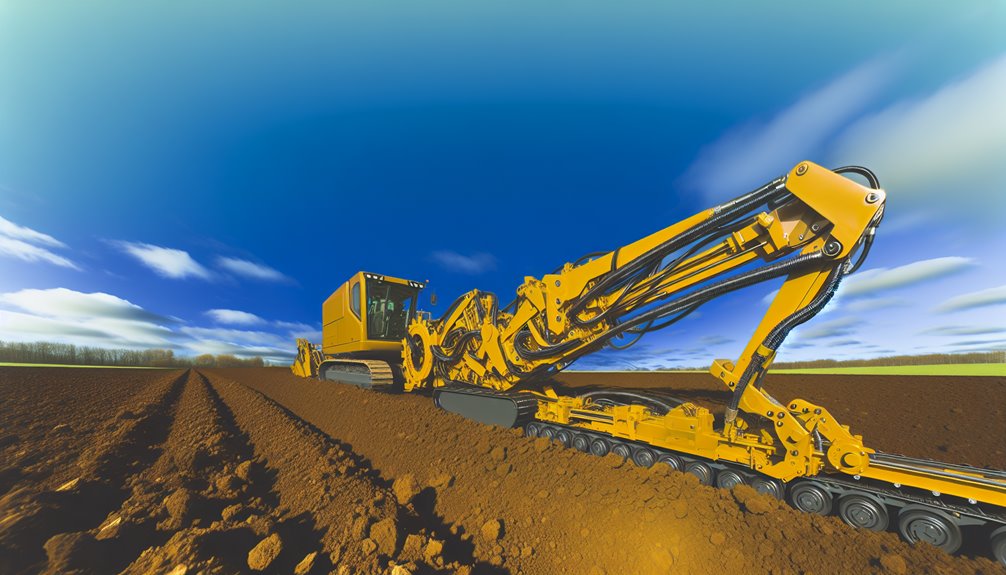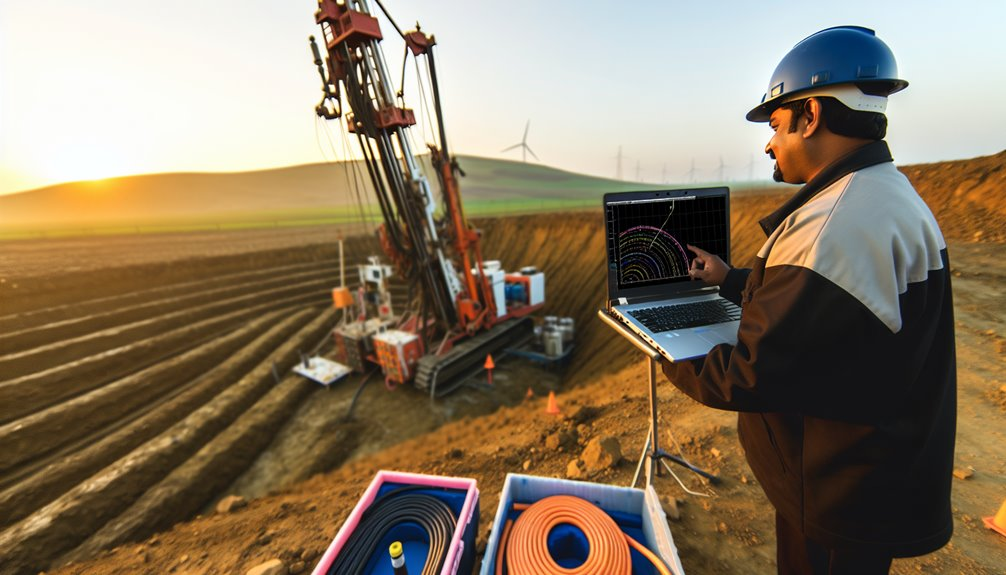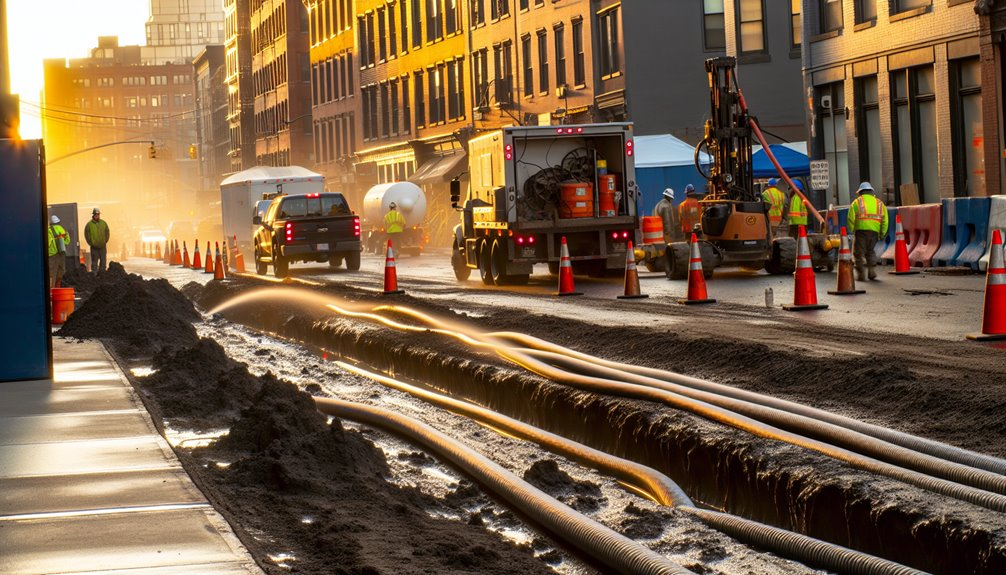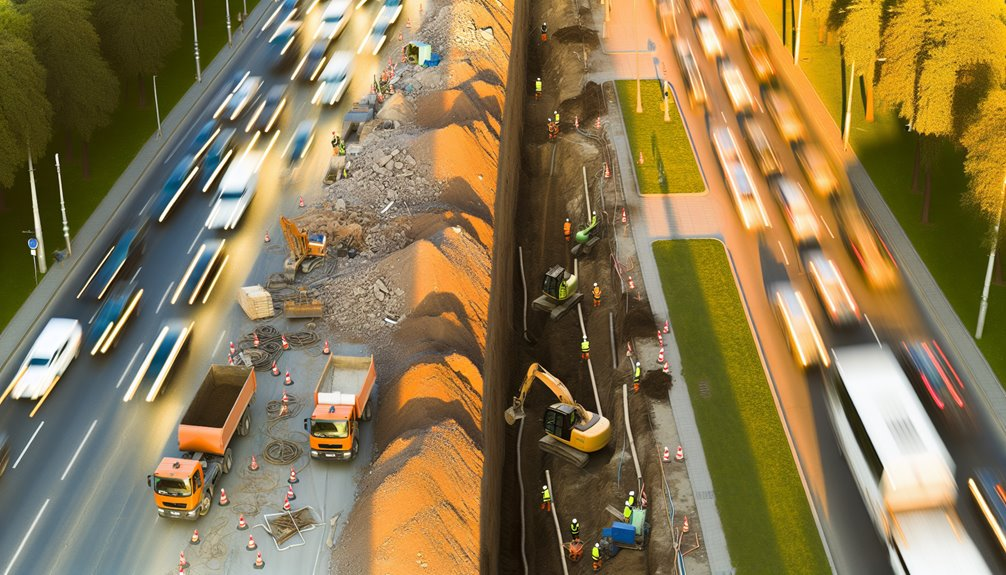As you explore the latest advancements in trenching services equipment, consider how GPS-guided precision has revolutionized the accuracy and efficiency of modern trenchers. These systems guarantee that trenches are dug to exact specifications with minimal deviation, reducing costly errors and rework. Furthermore, the integration of real-time data analytics enables a more streamlined workflow and resource management. Ponder the potential impact on your next project as we further explore how these technologies are reshaping industry standards.
GPS-Guided Precision in Modern Trenchers
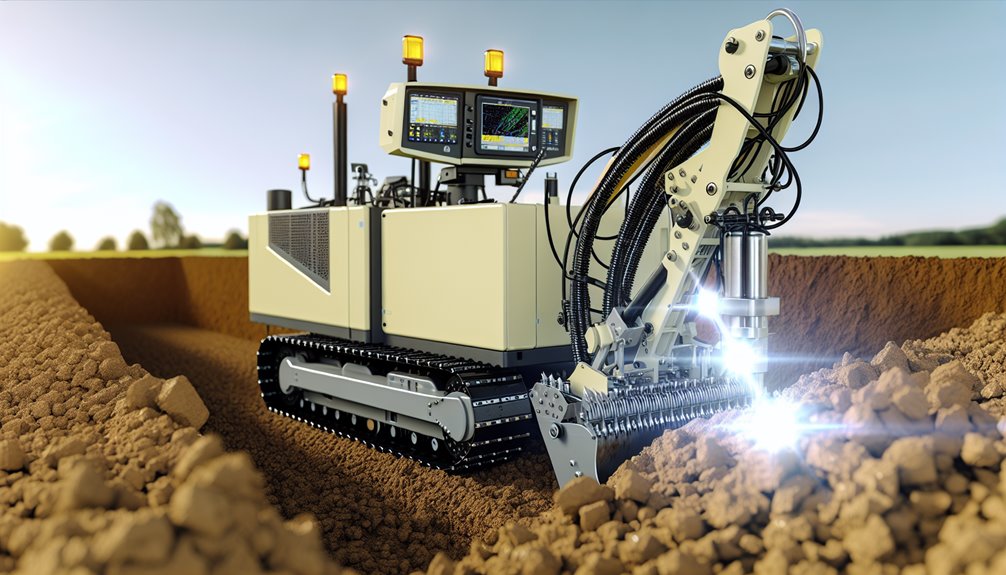
As trenching technology advances, GPS-guided precision has become essential to modern trenchers, greatly enhancing their efficiency and accuracy.
You'll find that GPS technology allows for high accuracy in digging alignment, depth, and grade, strictly adhering to project specifications. This integration facilitates real-time positioning updates, which are vital for precise excavation and markedly reduce the need for manual monitoring.
By replacing traditional methods like laser systems and string lines, GPS-guided systems streamline operations and improve overall precision.
In addition, automated machine control features, including auto-steering enabled by systems like TrenchTronic, allow for the autonomous execution of excavation tasks. This automation not only minimizes errors such as undercut or overcut but also saves considerable time and money. This technology also supports the import of existing underground utility maps, enhancing safety by preventing collisions with existing infrastructure.
Advancements in Trench Safety Technologies
With the evolution of trenching technologies, your focus on safety has never been more critical. Harnessing 3D modeling and GIS, you can now pinpoint underground hazards before breaking ground, dramatically reducing the risk of cave-ins.
Trenchless methods like directional boring further minimize open trench dangers, enhancing overall trench safety.
Your adoption of Guardian's lightweight G-rail Trench Box Receiver and the integration of advanced Davit arm systems from National Trench Safety guarantees compliance with OSHA standards and expedites rescue operations.
The SETU tool's real-time access to hazard data and protective system recommendations enhances hazard awareness, guiding your safety decisions effectively.
Embrace these advancements to maintain a high safety standard in your trenching operations. Additionally, incorporating modern technology lowers risks of cave-ins by allowing for more precise planning and execution.
The Rise of Eco-Friendly Trenching Machines
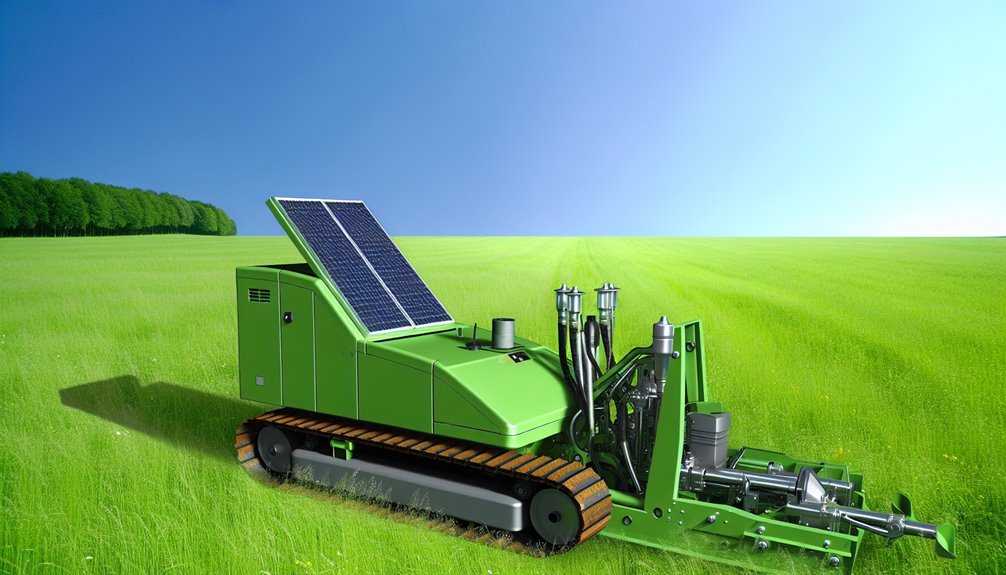
Recognizing the urgent need for sustainability, manufacturers are revolutionizing trenching equipment with eco-friendly innovations.
You'll find that the latest models not only meet but exceed Tier 4 emission standards, ensuring reduced pollutants and enhanced fuel efficiency.
These machines leverage alternative fuels and incorporate sustainable materials in their construction, considerably diminishing their environmental footprint.
Enhancing Efficiency With Automated Trenching Systems
Automated trenching systems considerably increase production rates, achieving up to 180 feet per hour and guaranteeing continuous operation without the fatigue associated with manual labor.
These systems leverage RTK GPS and proprietary kinematic software, honing accuracy to within 1/10 of a foot. This precision guarantees trenches are ready for infrastructure installation with minimal rework, streamlining project management processes.
You'll find that these technologies allow for real-time adjustments in trench width and monitoring, adapting to various terrains and conditions up to a 10% grade.
Automated trenching not only enhances the safety by distancing operators from direct risk but also integrates extensive data collection, facilitating better decision-making and resource allocation in your projects.
The Impact of Trenching Innovations on Project Costs and Timelines
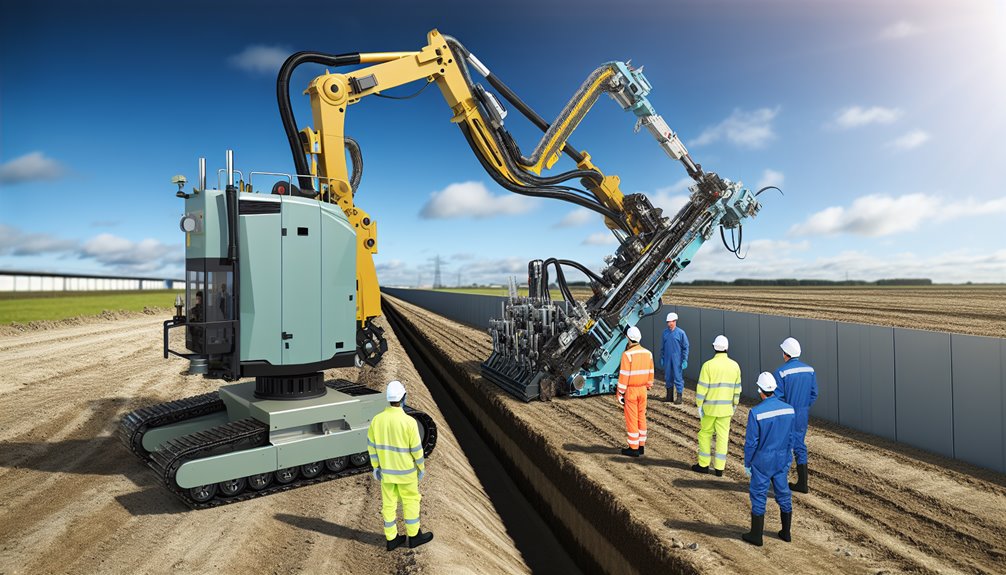
As trenching technology advances, project costs and timelines experience significant shifts.
You'll notice that the operational efficiency of state-of-the-art walk-behind trenchers, with their variable-speed drive systems and adjustable controls, doesn't just streamline your operations—it slashes your project timelines considerably.
Smart technology integration and IoT capabilities permit real-time adjustments, enhancing machine performance and minimizing downtime, crucial for project enhancement.
Furthermore, cost reduction is evident as these innovations negate the need for extensive machinery fleets and reduce overhead.
The use of durable, fuel-efficient engines and the strategic application of data analytics guarantee that your resources are utilized effectively, reducing financial waste and improving the cost-effectiveness of your projects.
This technological leap translates into a competitive edge in pricing and project delivery.
Conclusion
As you explore the latest trenching technologies, you'll find GPS guidance and automated systems not only boost precision but also slash project timelines and costs. The adoption of eco-friendly equipment is reducing environmental impacts substantially. Additionally, enhanced safety protocols from advanced technologies are setting higher standards in excavation practices. Ultimately, these innovations are reshaping the trenching landscape, offering both financial and operational efficiencies that can't be overlooked in today's competitive market.
If you're curious to learn more about how these innovations can benefit your projects, I invite you to visit Boring Bros at boringbro.com or give us a call at (954) 639-6167. We'd love to chat and help you discover how our trenching solutions can make a difference for you.

